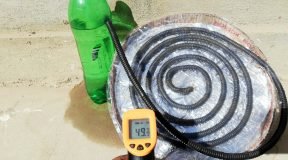
Diy resistor from lead pencil
Diy resistor from lead pencil ,This is a demonstration of variable resistance. The core of a lead pencil does n't lead at all but it's the graphite which conduct the whole process. Graphite will conduct electric current, but not as near as copper. Because it resists the flow of current, it's only a one example of kind of resistor. As the bare copper wire move close together, the resistance is gradually reduce and the light gradually becomes brighter. This is the principle of the rheostat used this dim automobile dash lights and some light in homes, theaters, and public buildings.
Material needed
Circuit as shown in battery, lengths of insulated copper wire of 20 or 22 gauge, and a small light socket with miniature bulb. Large writing pencil with about 8 cm (3 in) of wood removed on one half to expose the graphite core
Procedure
- Touch the end of the bare wire to the graphite (LED) core of the pencil, as far apart as possible.
- Slowly slide the bare wire closer together along the graphite and observe the light.
- Can you see the information you have learned about conductors to explain this?
- Have you see anything like this principle used in a home or an automobile?

For problem solvers: If you have a switch at home that dims the light, it works in about the same way as the pencil lead you used for this activity. A resistor switch is called a rheostat. This device make it possible to change the amount of current going to an appliance (light, heater, etc.). Make a list of all the things you can think of that use resistor switches. Think about the kitchen. Think about the car. Share your list with others who are doing this activity and with your teacher.
INTEGRATING: Language art, social studies
SKILLS: Observation, inferring, classifying, predicting, communicating, comparing, and contrasting, formulating hypotheses, identifying and controlling variables, experimenting researching.
How to make simple astrolabe "Clinometer "







1 Comment
kit for Curious Projects links Online ScienceStore.pk
(October 18, 2021 - 10:21 am)[…] Diy resistor from lead pencil […]